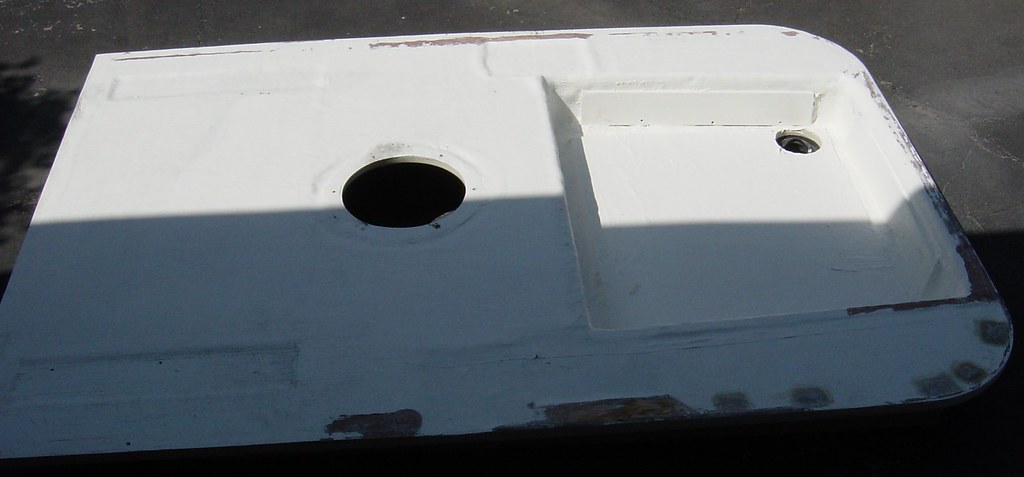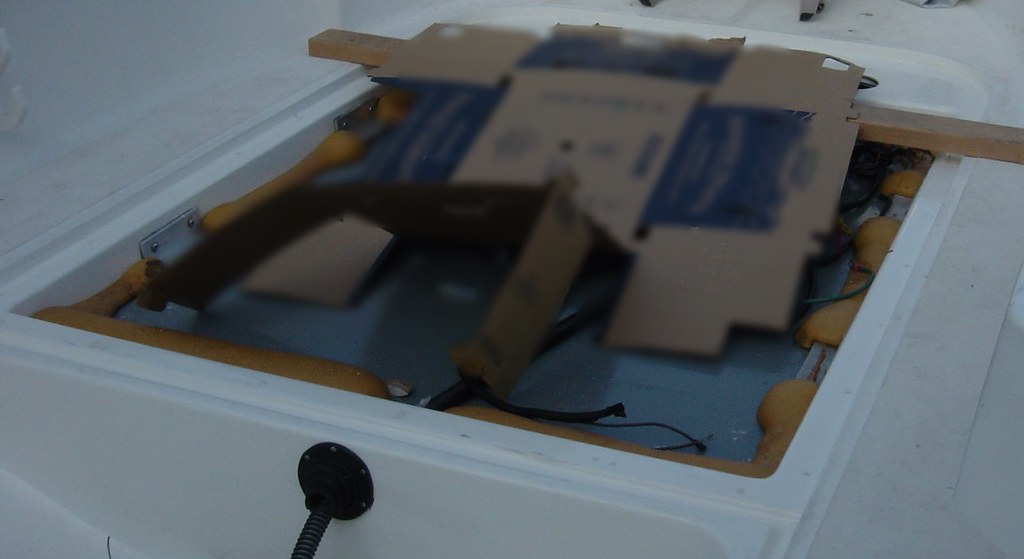Hello,
I am sure some of you have come across situations where you are trying to mate two surfaces to sit flat against each other.
I am looking for ideas on how to effectively make a deck, pretty stiff 1" thick piece of plywood cored fiberglass, on to a 2" ledge.
Picture 1 is the deck turned upside down showing the surface that has to sit flush in the cavity shown in picture 2.
Notice the 1" high cavity with a 2" ledge all around. The middle area just floats in picture 2.
One corner is slightly raised and is not sitting flat. I am looking for ways on how to find where I have to grid to make it sit flat.
Picture 1

Picture 2

Base has following dimension, 2 " ledge.

I am sure some of you have come across situations where you are trying to mate two surfaces to sit flat against each other.
I am looking for ideas on how to effectively make a deck, pretty stiff 1" thick piece of plywood cored fiberglass, on to a 2" ledge.
Picture 1 is the deck turned upside down showing the surface that has to sit flush in the cavity shown in picture 2.
Notice the 1" high cavity with a 2" ledge all around. The middle area just floats in picture 2.
One corner is slightly raised and is not sitting flat. I am looking for ways on how to find where I have to grid to make it sit flat.
Picture 1

Picture 2

Base has following dimension, 2 " ledge.


